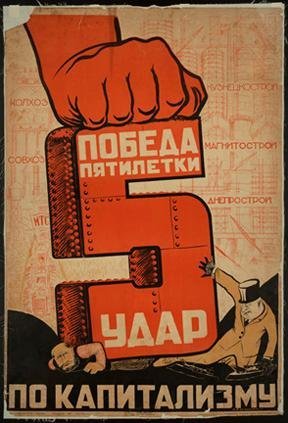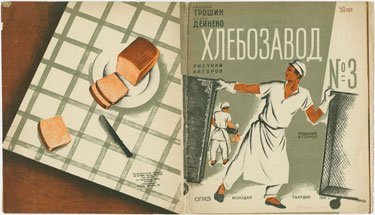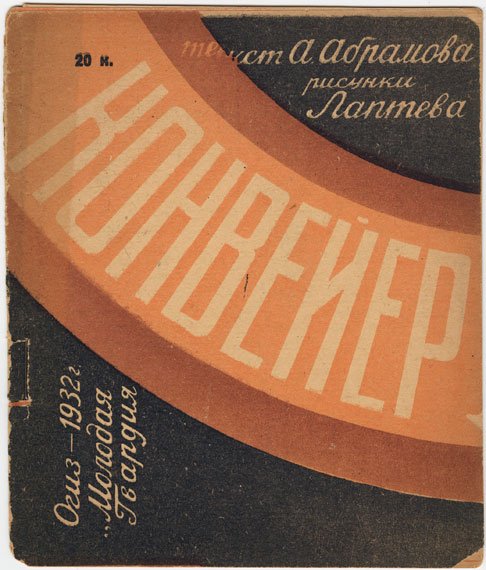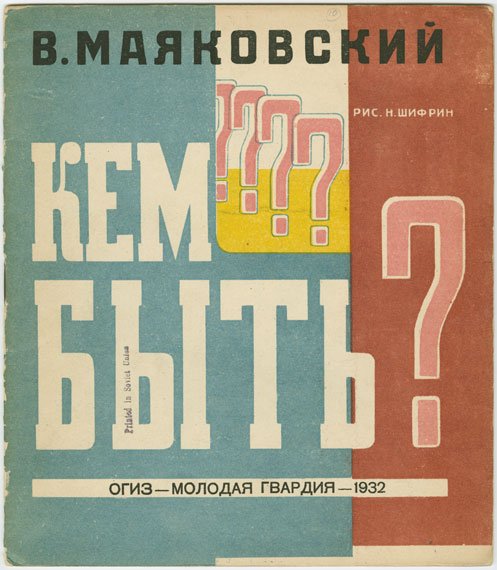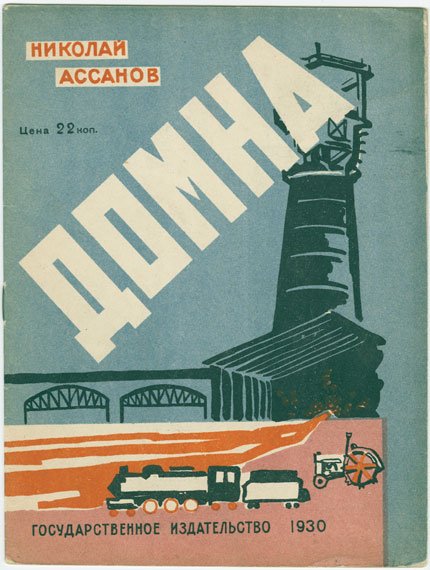Viewing and Learning
Produced for neither a free market nor traditional art institutions, Soviet art in the 1930s served a primarily pedagogical purpose. Graphic art especially was envisioned as a form of communication that would not only convey a specific meaning to its audience but also act upon its viewer in a manner somewhat reminiscent of the avant-garde’s ambition of shaping a new model citizen. However, while still taking seriously their predecessors’ belief in the correlation between aesthetic and social forms, one might argue that Soviet graphic artists focused their energies on shaping human consciousness rather than creating a new, revolutionary social organization.
Soviet children’s books and posters made use of their distinct perceptual effects and anticipated modes of reception in order to realize particular pedagogical goals. Soviet graphic art was most often intended for reproduction, dissemination, and viewership on a mass scale. One can observe a shift from presentness and verticality in the posters to duration and horizontality in the children’s books. This shift can be understood in terms of the difference between a pedagogical art that projects its function through agitational directives and one characterized by edificatory guidance.
Posters in particular were addressed to the collective, and this collective address was imagined to contribute to the creation of a new Soviet citizenry through direct appeal and agitation. Posters endeavor to communicate their messages as widely and instantaneously as possible by constructing a monumental space within a single plane. This is evident in the poster “The Victory of the Five Year Plan Is a Blow Against Capitalism,” (N.V. Tsivchinskii) which conveys a singular, unequivocal message through the depiction of a few iconic images in a spatially symbolic arrangement that is immediately both comprehensible and compelling.
Children’s books, on the other hand, were oriented towards individual consumption. They thus encouraged a mode of viewing that was both more personalized and more contemplative. Books manipulate their extended spatial format to act as a metaphor for the passage of time. The multi-page design of the books offers the opportunity to create a durational effect through the use of literary narrative and a long-term, tactile engagement. In Konveier (Conveyer Belt), for instance, the illustrators utilize the extended space of the book format to depict progress over time in two ways. On a two-page spread at the beginning of the book, the process of building a car is illustrated in a sequential zig-zag around the plane of the pages so as to allow the viewer to chart the steps of the assembly line. Here consecutive moments in time are conveyed by the images’ placement across the two-page plane, yet the majority of the book illustrates over several sequential pages the collaborative, gradual process of creating a three-dimensional construction from a sheet of paper.
Khlebozavod (Bread Factory No. 3) manipulates the temporal possibilities of the book format in a similar manner. Opening with a nocturnal image of a bread factory and closing with one of the factory in the morning, the book illustrates the method of making bread from start to finish. The foldout pages in the middle of the book best convey this process. The outer flaps of the foldout section depict individuals performing the first and last stages of the factory’s procedure, mirroring the night and morning scenes presented at the start and end of the book. The four-page spread within portrays the complete process of bread-making with illustrations of machines and the individuals using them at various stages of their successive operations throughout the night. While turning the pages, the reader perceives the passage from the present time into a future one. This phenomenological effect is, of course, related to the young age and nascent consciousness of the book's intended audience – the first truly Soviet generation. These fully Soviet citizens stood apart from the generally older viewers of the posters, who perhaps required a brisker assimilation into the values of the new society.
These distinct pedagogical goals are further reinforced by the perceptual structuring device of verticality and horizontality. The vertical format of the posters is appropriate for the medium’s explicit instruction. The image in the poster “Red Front,” for instance, serves as a visual epitome of the course of action that is described by the text that accompanies it. By illustrating a particular model of behavior through the projection of an idealized worldview, the posters convey a directive to a mass audience in the space of a singular visualization. The poster “Here, There, Everywhere We Are Building Socialism” offers a similar effect. In the background of the poster a structure representative of the new socialist life provides the viewer with a vista onto the future world. In the foreground an instructive figure seems to step out of this idealized worldview and into the viewer’s current world. The poster seems to intimate that if the lead of this directive figure is followed, the bridge between present and future worlds can be traversed.
The children’s book’s horizontal orientation, on the other hand, facilitates a more interactive, processual, and individualized experience akin to a guided self-education. The illustrations in books such as Domna (Furnace) invite possibilities for individuated interpretations by presenting a number of disparate scenes or images through different perspectives, angles, scales, and in somewhat different styles throughout the book, sometimes even within a single page. Kem Byt? (Whom Shall I Be?) offers similarly disjointed and versatile views of particular professions by compiling images from a number of distinct, decentered scenes or representations in incongruous scales and perspectives across the book's pages. The books certainly steer their viewers towards a particular understanding, but they do so in a manner that requires a greater deal of interpretive activity, which is made possible by the greater span of time the book format makes available, both literally and metaphorically.
by Michelle Maydanchik
